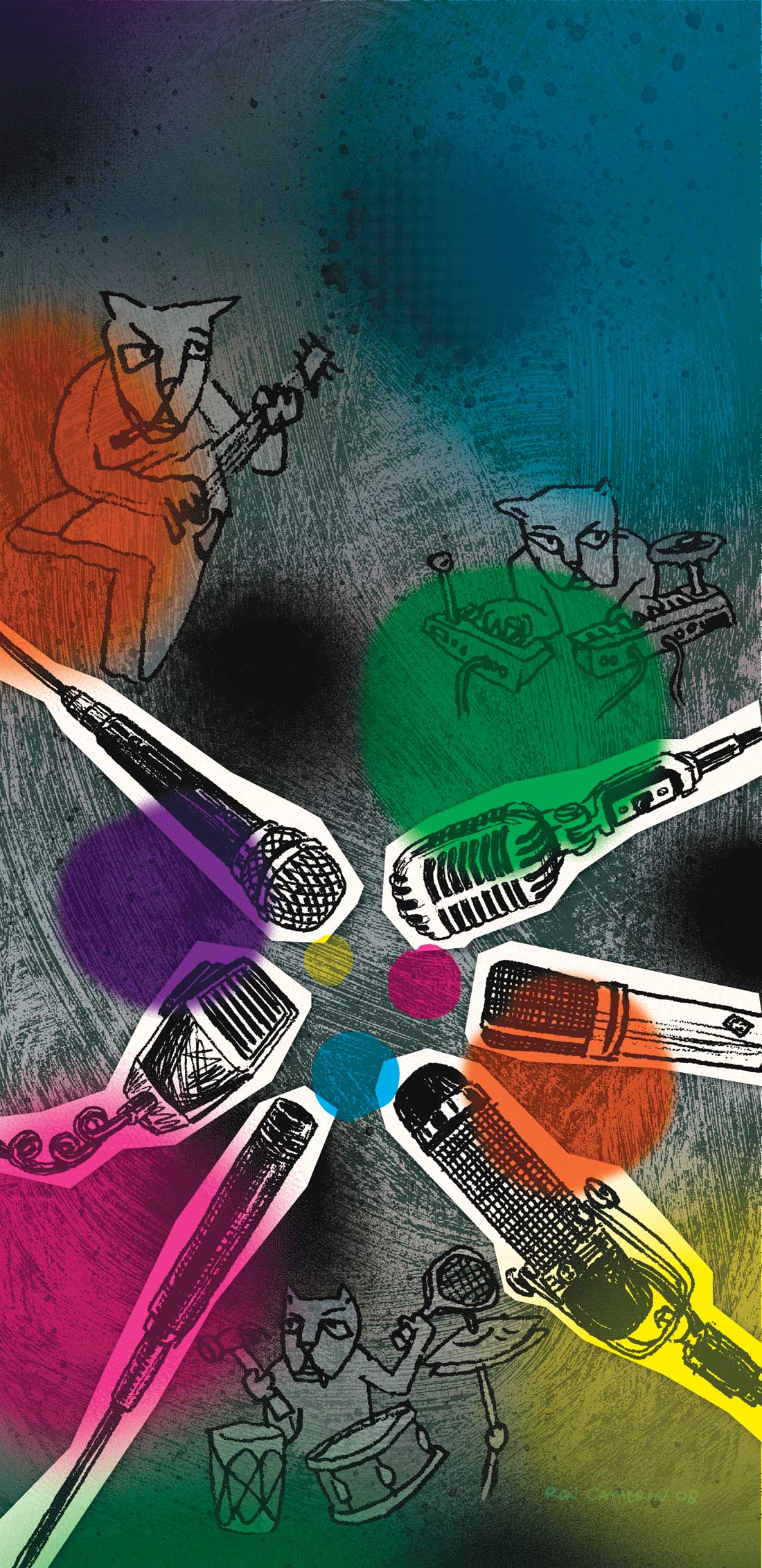Although Thermionic Culture's Phoenix compressor (Tape Op #63) gets raves from everyone I know who has one, as does the Culture Vulture (Tape Op #45), The Earlybird 1.2 has yet to receive the recognition it deserves. This truly excellent product is a 2RU-height, two-channel microphone preamp capable of 40-60 dB of gain, adjustable in 5 dB increments, with a fine-tunable, continuously-variable master output. It has selectable impedance between 300 and 1200 Ohms; a high-pass filter that can be set to 48 Hz, 96 Hz, or bypassed; a 20 dB pad; and a pair of VU-style meters. The front-panel controls are grouped by function, not by channel. The gain, pad, and filter controls for both channels are grouped on the left side; the output, polarity reverse, and VU meters are just to the right of center; and phantom power is on the far right. This slightly unusual layout is no problem in use, and I can only guess it was chosen for more efficient internal wiring.
The Earlybird has a balanced push-pull, all-tube circuit, which Thermionic claim is unique in this application, resulting in an extremely low-noise, high-headroom design. Its sonic character is hard to describe because it's so natural, and I think it would be impossible for this preamp to be the cause of a bad sound. It may be a bit cliche to say that it sounds great on everything I tried it on, but it's true. On the scale of clean to colored, I'd put it right in the middle.
The myth about tube-based gear is that it sounds "warm". In reality, tubes are generally very clean and hi-fi while still imparting a euphonic character. It's the transformers often found within tube-based circuitry that lead to the thick, rich syrupy sound that people associate with tubes. Sure it's fun to add more of that sound for a richer result, but when you get to the mix, you may discover that you pushed it too far and you need to EQ the top end to open it up. Your attempts at an all-around euphonic sound can lead to a fizzy high end, and the sound can quickly lose its inviting character. This will never happen with The Earlybird.
In the other direction, a "clean" mic preamp can often be too sterile. Even when people are striving for the most clean and natural sound, they don't really want natural, they want better than natural, and that's where The Earlybird shines. If you feed it a beautiful sound, you'll get an even more beautiful sound out of it. Its top end is open and clear without any bright crispness. The low end is clean, tight, present, and without smear. The midrange is natural without any notches of honkiness. Kick and snare come through with a defined presence. Bass has the upper midrange detail to give it articulation in a mix without having to notch in EQ. Guitars and vocals have clarity and are free of gritty sibilance even when you drive the preamp hard. The Earlybird's natural sound takes EQ well and is free of any artifacts that would create a monotonous buildup even if you recorded all your tracks through it.
On a side note, all of Thermionic's products have straightforward controls and require minimal documentation, which inspired a short debate with my friend Joel Morowitz, owner of Ecstatic Electric. The Earlybird's manual tells me only what I need to know to operate the preamp without any hype about what it's best for. I think manufacturer hype can offer a good starting point when learning a piece of gear, but Joel believes that the preamp's price makes it likely to be purchased by experienced users who don't need guidance from the manufacturer. I think this is why The Earlybird is not as well
known as it should be. In my view, there's no such thing as bad gear; you just have to find its optimal use. For instance, Shure's SM57 and Level-Loc are arguably bad pieces of gear, but they can be used for excellent results. A piece of gear doesn't become great until you know where it excels, and I think guidance from the manufacturer can help you find those great uses. Given its price and the lack of manufacturer hype, I think The Earlybird 1.2 will be a late bloomer with a long, gradual growth in reputation, so don't be surprised when you start to hear more about its greatness. ($3550 MSRP; www.thermionicculture.com)
Tape Op is a bi-monthly magazine devoted to the art of record making.




_disp_horizontal_bw.jpg)